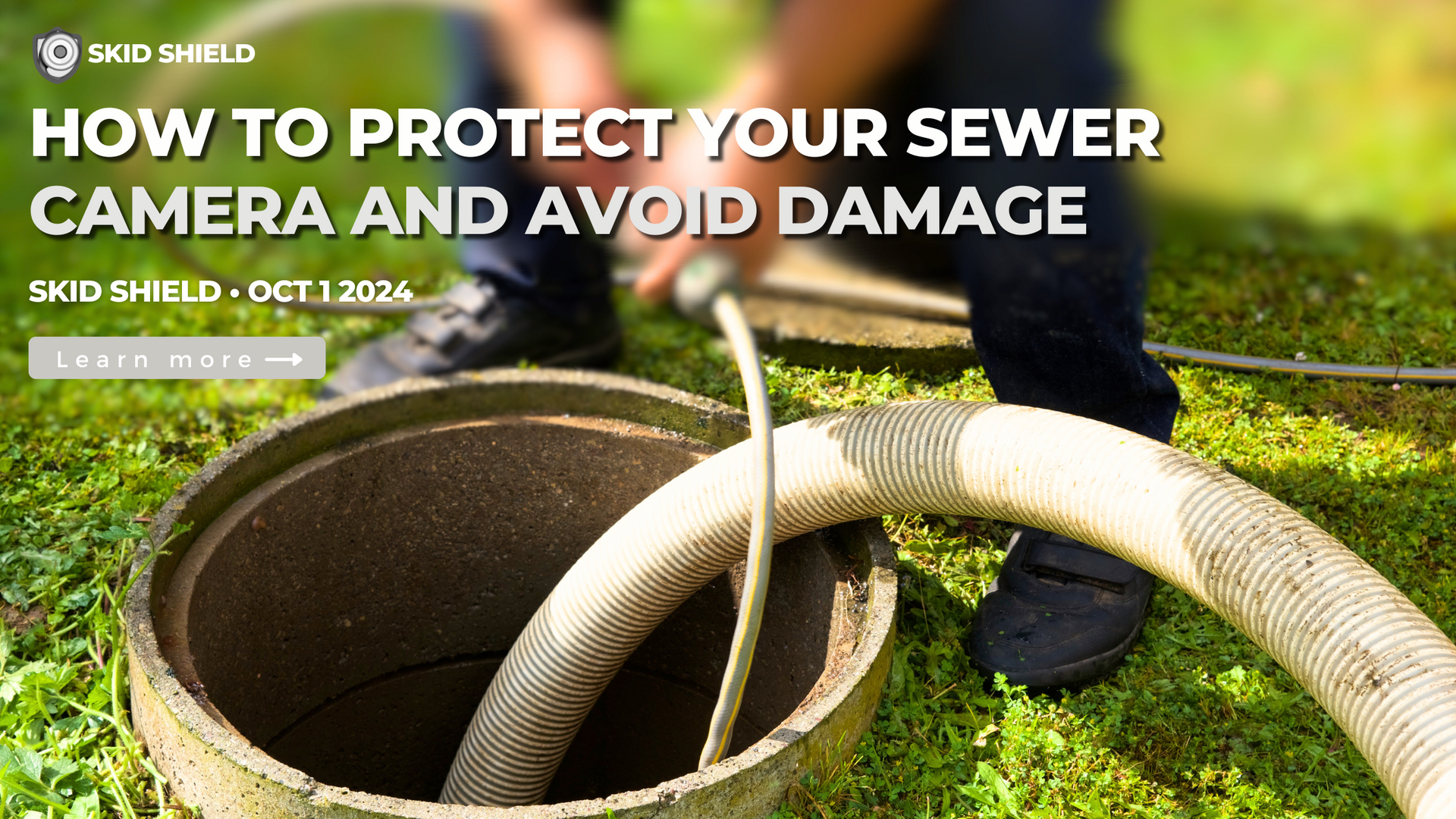720-390-8762
skidshield@gmail.com

How to Prepare Your Home’s Plumbing for Summer Storms

How to Prepare Your Home for Summer Storms
Summer storms can be intense and unpredictable, bringing heavy rainfall, strong winds, hail, and even tornadoes. While you can't control the weather, you can take steps to ensure your home is well-prepared to minimize damage and protect your family. Whether it’s securing windows, checking your roof, or creating an emergency plan, proper preparation can make a huge difference when the storm hits. In this blog, we’ll share some essential tips on how to prepare your home for summer storms.
1. Create an Emergency Plan
- Why it matters: Having a family emergency plan in place ensures everyone knows what to do in the event of a storm. It can save time and reduce stress during an emergency.
- What to do: Make sure your family knows where to go in case of an emergency, such as a safe room or basement. Designate a meeting spot if you get separated, and ensure everyone has important phone numbers saved, including local emergency services. Don’t forget to have a plan for pets as well.
2. Inspect and Maintain Your Roof
- Why it matters: A damaged or weak roof can easily be compromised by strong winds or hail, leading to leaks or significant damage inside your home.
- What to do: Inspect your roof for any loose shingles, cracks, or wear. If you spot any issues, contact a roofing professional to repair them before the storm season begins. Clear any debris from the roof and gutters to allow water to flow freely and reduce the risk of water damage.
3. Trim Trees and Shrubs
- Why it matters: Overgrown trees and shrubs with weak branches can become dangerous in high winds, potentially causing damage to your home or car.
- What to do: Trim back any branches that are close to your house, windows, or power lines. Ensure that trees are healthy and free from diseases that could cause them to break during a storm. If necessary, have larger trees professionally inspected and pruned.
4. Secure Windows and Doors
- Why it matters: Windows and doors are vulnerable points during a storm, especially if strong winds or hail are involved. Broken windows can lead to extensive water damage and even injury.
- What to do: Install storm shutters or impact-resistant windows to protect your home from flying debris. If storm shutters aren’t an option, use plywood to cover windows. Ensure that all doors, especially garage doors, are securely closed and latched.
5. Check Your Home's Drainage System
- Why it matters: Poor drainage around your home can lead to flooding during heavy rainfall, causing water damage to the foundation and interior.
- What to do: Inspect gutters, downspouts, and drains to make sure they are clear of debris. Ensure that downspouts direct water away from your foundation (at least 3-4 feet away). If necessary, consider installing a French drain or a sump pump to reduce the risk of water accumulation around your home.
6. Prepare an Emergency Kit
- Why it matters: Power outages, flooding, or storm damage may leave you without essential supplies for an extended period. Having an emergency kit ready can make sure you’re prepared.
- What to do: Pack a kit with necessities like bottled water, non-perishable food, medications, flashlights, batteries, a first-aid kit, a battery-powered radio, and any important documents. Don’t forget supplies for pets if you have them. Keep the kit in an easily accessible place.
7. Secure Outdoor Furniture and Objects
- Why it matters: Wind can turn outdoor furniture, grills, or other objects into dangerous projectiles, potentially causing damage to your home or neighbors' property.
- What to do: Bring in or securely tie down outdoor furniture, umbrellas, grills, and anything that could be picked up by the wind. Store away anything that’s lightweight but could easily become a hazard, such as children’s toys, planters, or lawn decorations.
8. Know Your Flood Zone Risk
- Why it matters: Flooding can be one of the most damaging aspects of a summer storm, especially if you live in a flood-prone area. Knowing your flood risk can help you take the necessary precautions.
- What to do: Check with your local government or use FEMA's Flood Map Service to determine if your home is in a flood zone. If you live in a high-risk area, consider flood-proofing your home by installing sump pumps, flood barriers, or elevating important appliances and utilities above potential flood levels.
9. Review Your Insurance Coverage
- Why it matters: In the event of storm damage, having proper insurance coverage can ensure you’re financially protected and help speed up the recovery process.
- What to do: Review your homeowner’s insurance policy to ensure you have adequate coverage for storm-related damage, including wind, hail, and flooding. If you’re in a flood zone, make sure you have flood insurance, as standard policies typically don’t cover this type of damage.
10. Prepare Your Vehicle
- Why it matters: Vehicles left outside can be damaged by flying debris, flooding, or high winds during a storm.
- What to do: If a storm is approaching, park your car in a garage or other safe location away from trees and power lines. Keep your vehicle’s emergency kit stocked with essentials like water, food, a flashlight, and first-aid supplies.
Conclusion
Summer storms can be powerful and unpredictable, but taking a few precautions ahead of time can make all the difference in keeping your home and family safe. From securing windows to trimming trees and reviewing your insurance, being proactive can help you weather the storm with confidence. Don’t wait until the last minute—start preparing now, and you’ll be ready for whatever the summer weather brings!
FAQ: Preparing Your Home for Summer Storms
1. What should I do if a storm is approaching?
- Before a storm hits, ensure all windows and doors are secured, outdoor furniture is stored or tied down, and your emergency kit is ready. Monitor weather updates and take shelter in a safe place if the storm intensifies.
2. How can I prevent flooding in my home during heavy rainfall?
- Clear gutters and downspouts, ensure proper drainage around your home, and inspect your sump pump to make sure it’s working correctly. If you're in a flood-prone area, consider installing flood barriers or elevating important appliances.
3. How do I protect my roof from storm damage?
- Regularly inspect your roof for loose or damaged shingles and repair them before the storm season. Also, clear debris from your roof and gutters to allow for proper water drainage. If you're unsure, consider a professional roof inspection.
4. How can I prepare my home for hailstorms?
- Install impact-resistant windows or storm shutters to protect your windows from hail. If that's not feasible, cover windows with plywood. Remove or secure any outdoor items that could be damaged by hail or wind, like furniture or garden tools.
5. Should I have flood insurance if I live in a flood zone?
- Yes. If you live in a flood-prone area, it's essential to have flood insurance, as standard homeowner policies typically don’t cover flood damage. Contact your insurance provider to ensure you're fully covered in case of flooding.
6. What items should I include in an emergency kit for summer storms?
- Your emergency kit should include bottled water, non-perishable food, flashlights, batteries, first-aid supplies, medications, a battery-powered radio, important documents, and supplies for pets if needed. Make sure your kit is easily accessible.
7. How can I protect my trees from storm damage?
- Trim any overhanging or weak branches, especially those near your home or power lines, and ensure the tree is healthy. If you have large trees, consider having them professionally inspected for potential risks of falling during strong winds.
8. What’s the best way to prepare my car for a storm?
- Park your vehicle in a garage or under a sturdy structure to protect it from hail and falling debris. If that's not possible, move it away from trees and power lines. Ensure your car’s emergency kit is stocked with essentials like water and first-aid supplies.
9. Should I evacuate if a storm is forecasted to be severe?
- If your area is under an evacuation order or if you're in a flood zone, it’s important to evacuate as soon as possible. Follow local authorities' guidance and have an evacuation plan in place for your family and pets.
10. How can I monitor storm updates effectively?
- Stay informed by listening to local weather stations, using weather apps, or watching TV broadcasts. Consider a battery-powered NOAA weather radio for real-time updates during power outages. Sign up for emergency alerts from your local government for the latest warnings and advisories.
Roman Fairchild
CEO, Skid Shield
Website:
skidshield.store
Email: skidshield@gmail.com



All Rights Reserved | SkidShield
Commerce City, Colorado United States
720 390 8762 | skidshield@gmail.com






